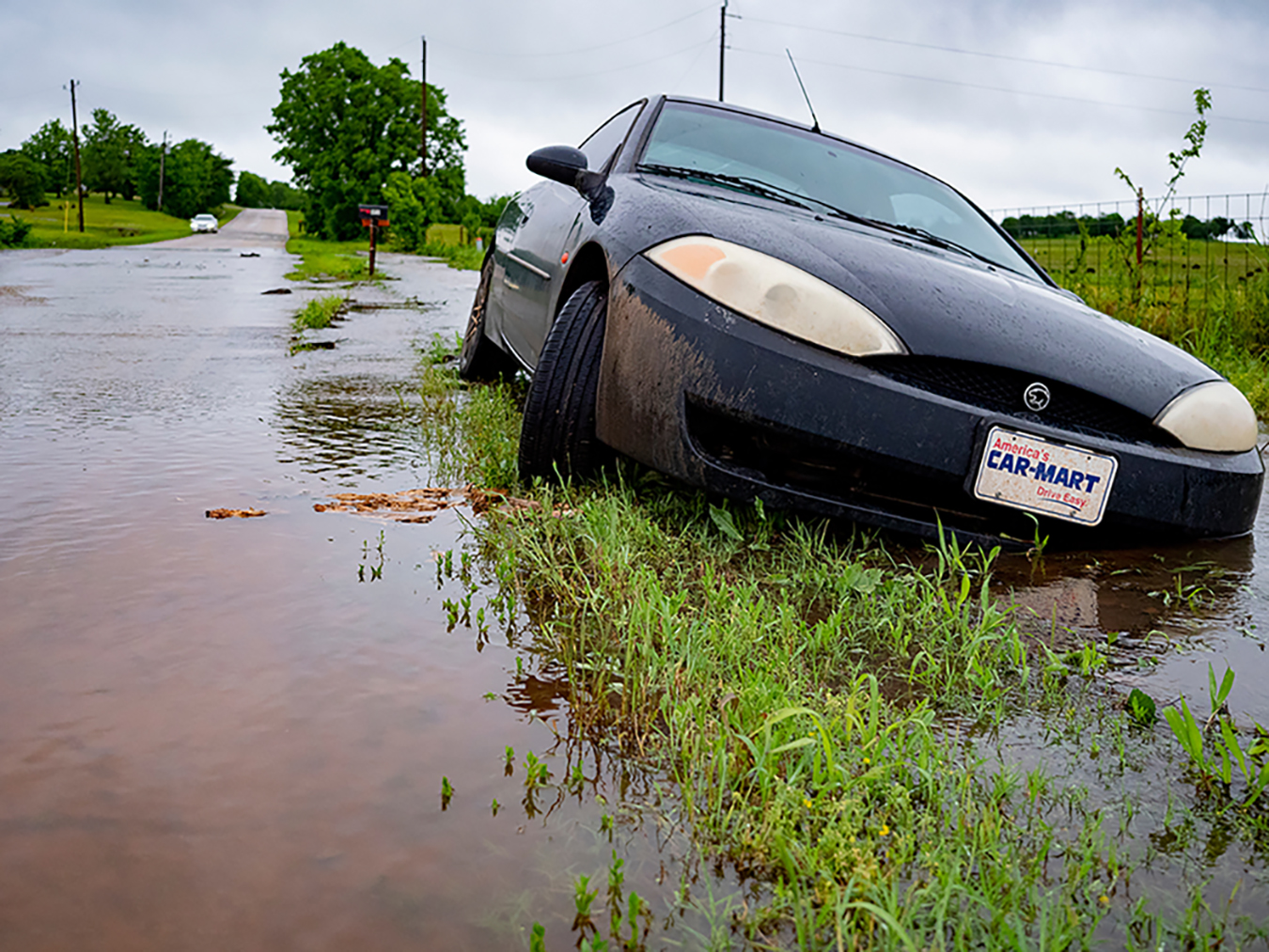Flood-Damaged Vehicles Can Ruin a Sale
After flood waters sweep through a community, a second wave of damaged property is likely to follow as people try to financially salvage as much as they can.
Some of those sellers won’t be entirely honest or know how bad their vehicles were damaged. When it comes to buying a flooded car, always remember the Latin phrase, “caveat emptor,” or buyer beware, said Gina Peek, assistant director, Oklahoma State University Extension/Family Consumer Science program leader and associate dean for Extension and Engagement in the College of Education and Human Sciences.
“For those of you who are in the market for a vehicle, keep in mind those flooded vehicles from the storm areas may find their way to local dealerships or be available through individual sales,” Peek said. “Buying a car is a big financial step, so it’s important to be as informed as possible about what to look for in a vehicle suspected of flood damage.”
Reputable dealerships are not likely to risk their reputations by selling flood-damaged vehicles to unsuspecting buyers, so that’s a good place to start, Peek said. Once an automobile has been located, ask the dealer if it has been damaged by floods. Be sure to get the answer in writing.
“If the seller or dealership won’t commit in writing to a firm ‘no,’ you should take your business elsewhere,” she said.
The buyer should perform their own research as well. Start with checking the vehicle’s title.
“You will be able to see what region of the country the vehicle came from and if it came out of a significant flood. Certain indicators, such as the words ‘flood’ or ‘salvage,’ are required by law in some states,” she said.
The car’s appearance won’t tell the whole story, and sometimes the nose knows even more. It can be difficult to get rid of the musty smell from a flood-damaged car. If there is a heavy smell of air freshener, it might be a signal that something is being covered up.
After eyes and nose, the next sense to employ is tactile: When checking for signs of moisture in a car, run your hands along the carpet. Don’t be shy about feeling around or using a mirror to look under car seats. If possible, pull back the carpet and check for signs of rust which can also hide in door hinges, hood springs, trunk latches, bolts and brackets under the dash.
Mismatched upholstery and brand-new carpet can suggest that something damaged has been replaced. Ask the seller. All materials inside the car should appear to be about the same age.
Floodwater can damage electrical wiring, so be sure to test all electronics in the vehicle, including headlights, brake lights, backup lights, dashboard lights, blinkers, windshield wipers, emergency flashers, cigarette lighter, ports for electronics and the radio/CD player.
Even if the automobile meets your standards, one more step would be helpful, she said.
“Take it to your trusted mechanic for inspection. A good mechanic will know where to look for signs of flood damage that you may not be able to access or know how to examine – for example, taking off the wheels and inspecting brakes and other components, which can carry visible signs of flood damage,” Peek said.
Buying a vehicle is a major investment. Although consumers want good deals, savings shouldn’t come at the cost of safety and reliability.
“If the dealership or seller is making a deal that sounds too good to be true, consumers probably should just walk away,” Peek said.

